What Scientology says:
Mr. Hubbard developed the E-Meter based on the knowledge that the mind contains mental image pictures, actual recordings of past experiences. These pictures contain energy and mass.
When a person views one of these mental image pictures, or thinks a thought, the E-Meter registers with precision the changes which occur in this mental mass and energy.
From the book Understanding the E-Meter, by L. Ron Hubbard:
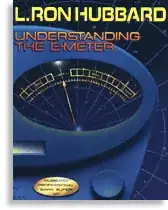 [Source]
[Source]
In Scientology is has been discovered that mental energy is simply a finer, higher level of physical energy. The test of this is conclusive in that a thetan “mocking up” (creating) mental image pictures and thrusting them into the body can increase the body mass and by casting them away again can decrease the body mass.
This test has actually been made and an increase of as much as thirty pounds, actually measured on scales, has been added to, and subtracted from, a body by creating ‘mental energy.’ Energy is energy, matter is condensed energy. [Source]
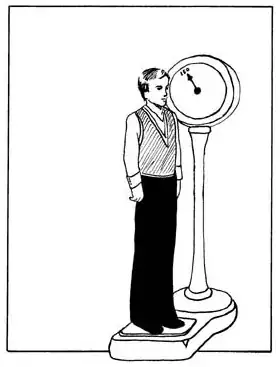
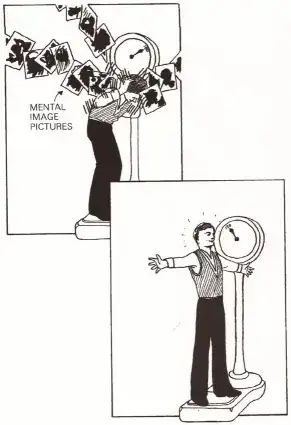
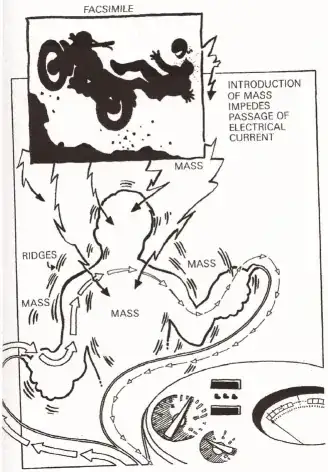 [Source]
[Source]
So basically the claim is: mental images increase the mass of the body. This increase can't just be measured with a scale, but also with an E-Meter (electrical current).
From The Skeptic's Dictionary:
There is no concept in physics or neurology of the mass and energy of a mental image.
This is not to say that thoughts don't have physical effects. They do, of course, but it really shouldn't be much of a revelation to find out that when one thinks of the most upsetting thing of the day that it has a negative physical effect.
Finding a reading on a meter while having a thought or feeling is little more than a stage prop, a bit of theater to make the process of telling you what you already know seem magical and scientific.
From David S. Touretzky, Computer Science Department & Center for the Neural Basis of Cognition, Carnegie Mellon University (he is a known critic of Scientology):
The US Food & Drug Administration raided Scientology on January 4, 1963 and seized hundreds of E-meters as illegal medical devices.
The incident is described in Jon Atack's book, A Piece of Blue Sky, and in this essay by Stephen Barrett, M.D.
Since that time, meters have been required to carry a disclaimer stating that they are purely a religious artifact.
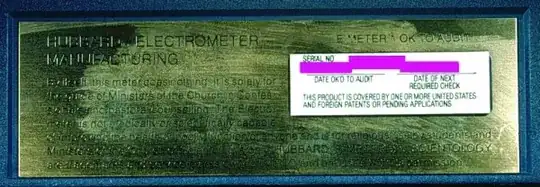
- By itself, this meter does nothing. It is solely for the guide of
Ministers of the Church in Confessionals and pastoral counselling. The
Electrometer is not medically or scientifically capable of improving the
health or bodily function of anyone and is for religious use by students
and Ministers of the Church of Scientology only. HUBBARD, E-METER and
SCIENTOLOGY are trademarks and service marks owned by RTC and used with its
permission.
This appellate court decision describes the trial and the various witnesses who appeared.
L. Ron Hubbard reveals in his book The Book Introducing The E-Meter :
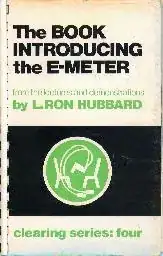
This is a Hubbard Electrometer called an E-Meter for short. Technically it is a specially developed 'Wheatstone Bridge' well known to electrically minded people as a device to measure the amount of resistance to a flow of electricity.
Inside the Mark Super VII
The Hubbard Professional Mark Super VII is the most sophisticated and expensive e-meter yet developed by the Church of Scientology. Its retail price in 1995 was US $3,850.


Although the Church of Scientology claims that their e-meters are made of special high-precision components, the electronic technology in the Mark Super VII is ordinary 1980s-era VLSI, including an Intel 8051 8-bit microprocessor.
An electrical engineer who examined the meter in November, 1995 estimated that devices of this type, custom-manufactured and sold in low volume, would normally retail for around $300 today. That is one twelfth the Church's asking price.
Visit David S. Touretzky's page for a lot more technical details about the E-Meter.
More:
 [
[

 [
[


